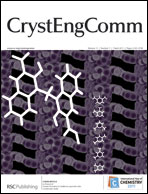Evaluation of intermolecular interactions in thioxanthone derivatives: substituent effect on crystal diversity†
Abstract
A family of 9H-thioxanthen-9-one derivatives and two precursors, ![[double bond, length as m-dash]](https://www.rsc.org/images/entities/char_e001.gif) O) in the thioxanthone (4). The main role played by weaker hydrogen bonds such as CH⋯O, and other intermolecular interactions, π–π and Br⋯O, as well as the geometric restraints of packing patterns shows the energetic interplay governing crystal packing. A common feature is the relation between the π–π stacking and the unit cell dimensions. A new synthon notation, RR′, introduced in this paper, refers to the possibility of accounting for intra- and intermolecular interactions into recognizable and recurring aggregate patterns.
O) in the thioxanthone (4). The main role played by weaker hydrogen bonds such as CH⋯O, and other intermolecular interactions, π–π and Br⋯O, as well as the geometric restraints of packing patterns shows the energetic interplay governing crystal packing. A common feature is the relation between the π–π stacking and the unit cell dimensions. A new synthon notation, RR′, introduced in this paper, refers to the possibility of accounting for intra- and intermolecular interactions into recognizable and recurring aggregate patterns.


 Please wait while we load your content...
Please wait while we load your content...